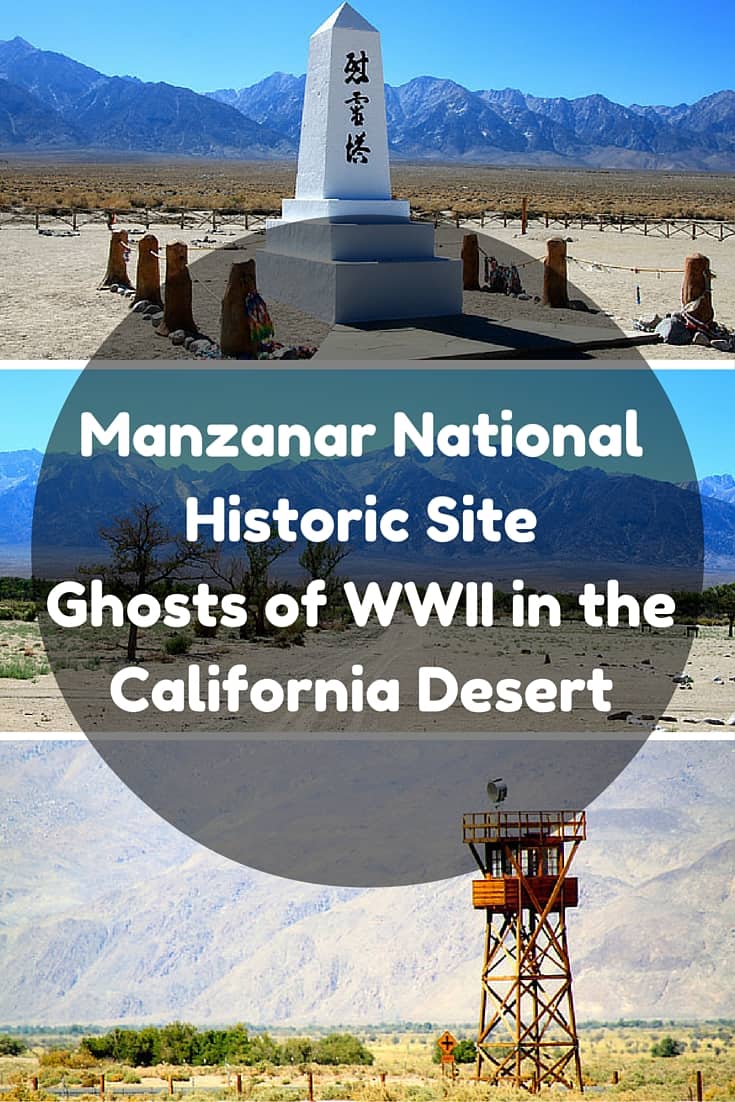Manzanar National Historic Site – Ghosts of WWII in the California Desert
categories: Eastern SierrasAt the outbreak of WWII, after a surprise attack by the nation of Japan the United States government decided that it would be unsafe to allow people with Japanese ancestry to live on the west coast of the country and required the relocation of 110,000 Japanese-Americans to War Relocation Camps. 62% of those who were interned were American Citizens, many of whom had been born in the United States and had never been outside its boundaries. Manzanar was one of 10 Relocation Centers where Japanese-Americans were moved as a result of President Franklin D. Roosevelt’s Executive Order 9066 in February of 1942.The Manzanar National Historic Site preserves some of the history of this dubious event in America’s history.

Manzanar Guard TowerOne of my father’s friends was the hometown football star on December 6th and suddenly considered a possible spy by the 8th. Some neighbors and friends rallied around members of the Japanese community to protect their property or businesses but many lost homes, businesses, and friends in a matter of a few months.
Many of those who were moved to Manzanar had been told it was for their own protection. They could not help noticing on their arrival that the searchlights and the guns on the guard towers pointed into the compound instead of out.

Manzanar National Historic Site
Most of the buildings that made up the camp at Manzanar were sold off at the end of the war. Many can be found elsewhere in the Owen’s Valley, while many others were sold for scrap. The imposing landscape of the Owen’s Valley remains. The rugged mountains of the Sierra Nevada give way to this parched and often windswept landscape that was not particularly inviting to someone who was compelled to live there. The location of all the old barracks are still marked, and I was struck by the size of the place (6,000 acres).

Manzanar Mess Hall
A few of the old buildings have been recreated, including a mess hall which is decorated with large translucent murals of scenes from the camp. It is as if some of the ghosts from this incident in American History won’t go away. 174 young men from the camp joined the Army during the war. Many of these would have been part of the 442nd Infantry Regiment, which was composed almost entirely of men of Japanese descent. This so-called “Go For Broke” Regiment saw heavy fighting in Italy and was the most decorated regiment in the history of the U.S. Army. Ironically, while these soldiers fought for their country, their families were locked up out of fear that they would become saboteurs or traitors.

Japanese Garden at Manzanar
The internees lived out their lives as best as they could. Then planted a number of gardens, attended school, and some worked making camouflage nets for soldiers.
I grew up in California. Many of my friends growing up were Japanese-Americans, so I had trouble understanding why a place like Manzanar had ever existed. My father knew two Japanese-American brothers who were caught by the outbreak of the war, one in Japan and one in the U.S. The one in Japan was interned for being an American, and the one in the U.S. was interned for being Japanese.

Manzanar Cemetary
One day these people were friends and neighbors, and the next, they woke up to discover they were the enemy. The visitor’s center at Manzanar National Historic Site does a wonderful job of capturing the history in an excellent museum house in the old community center and in a poignant film that should not be missed. Manzanar is not an easy place to happen across as it was built in the middle of nowhere very intentionally, but it is worth going a bit out of your way to visit. Plan for an hour or two for your visit.
- Book Your Accommodation HERE
- Get a Car Rental
- Buy Travel Insurance
- Log your park visits with a Passport To Your National Parks
- Search for Great Tours HERE

Leave a Reply
Tags: national park


